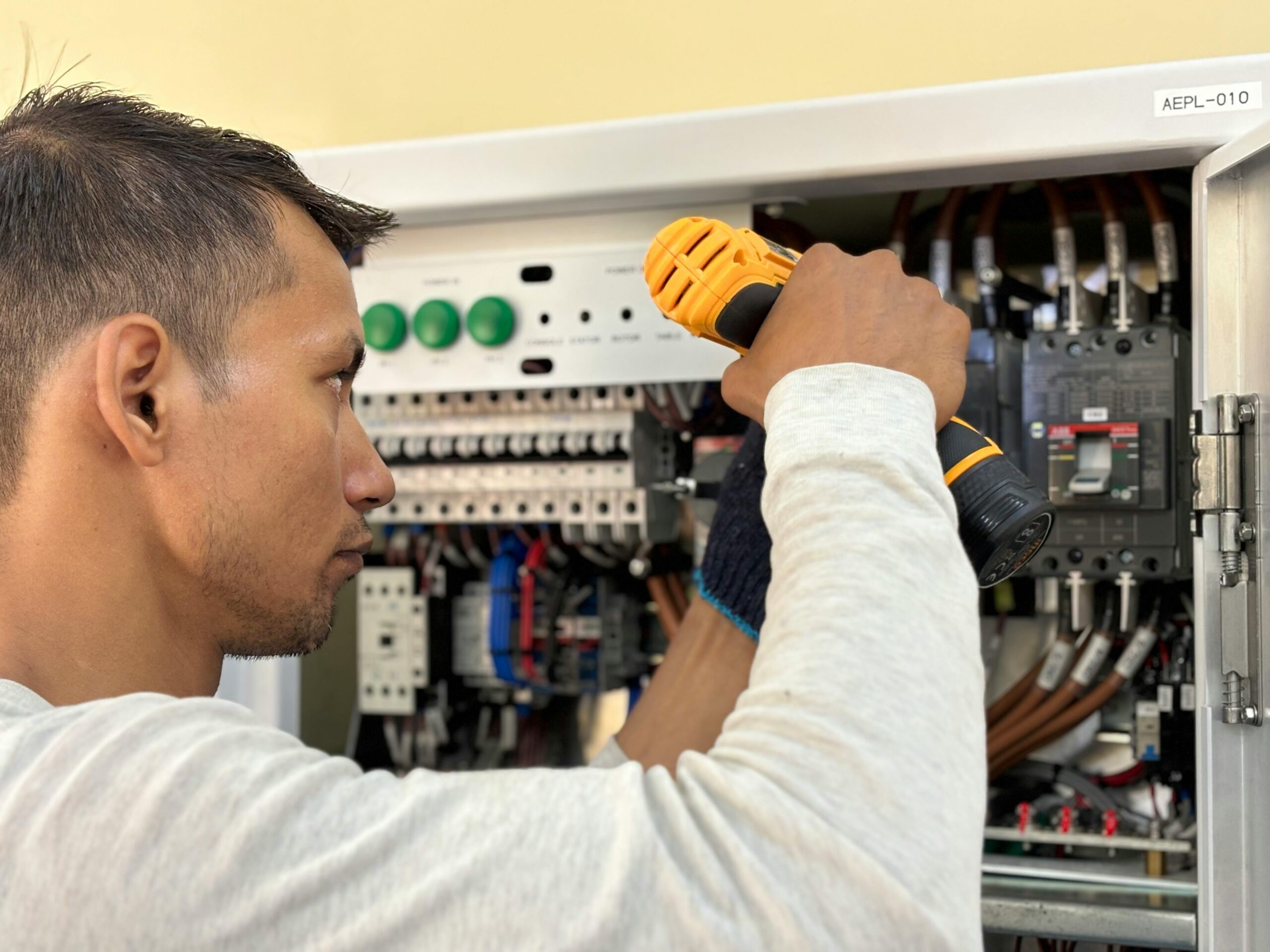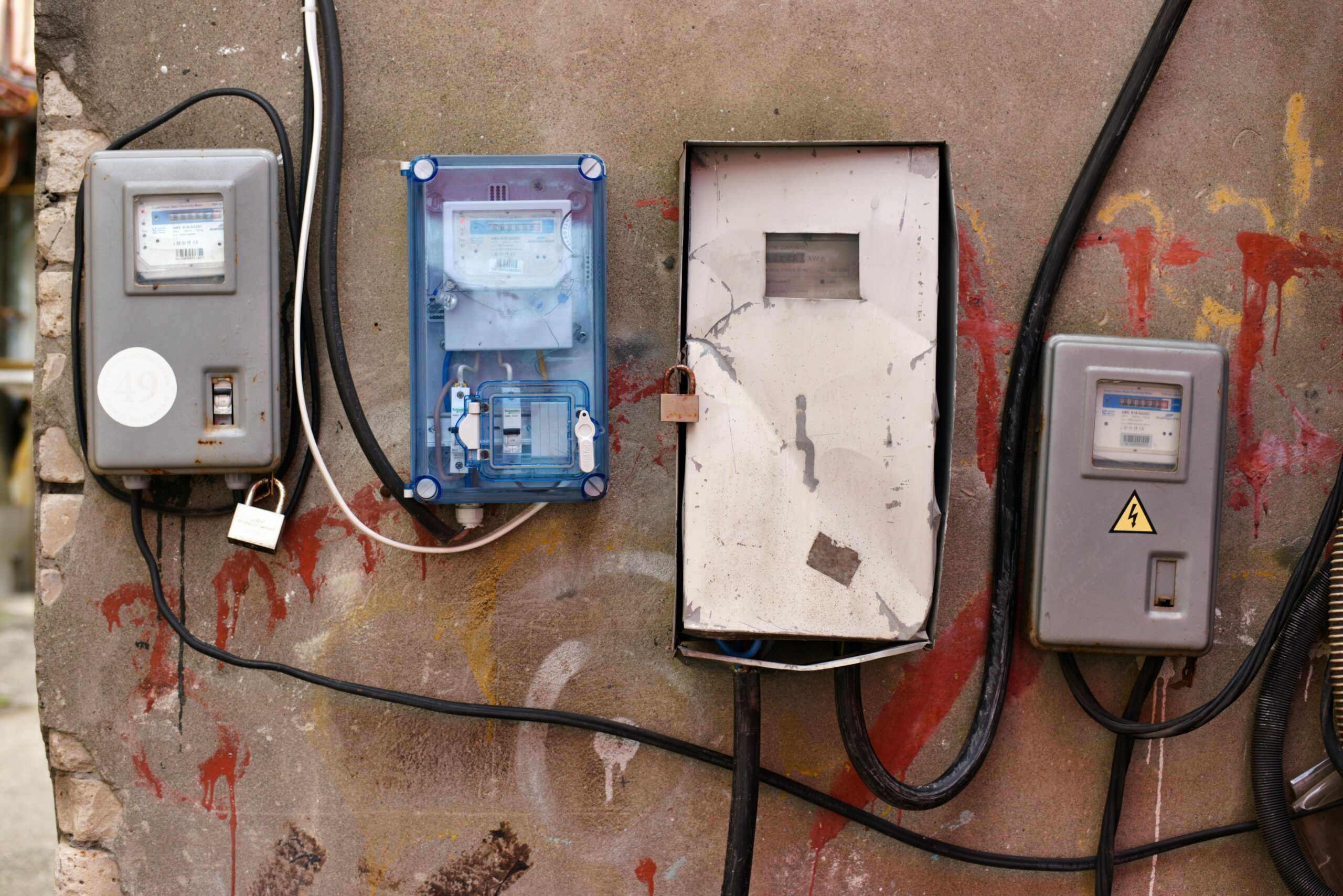Flickering lights are a common occurrence in many households and workplaces, often perceived as a minor inconvenience or an indication of a faulty lightbulb.
However, beyond the temporary annoyance, flickering lights can signal more serious electrical issues that may not only pose potential fire hazards but also hint at underlying, hazardous conditions within an electrical system.
Understanding the causes and risks associated with flickering lights is crucial for ensuring the safety of any space, highlighting the importance of early detection and resolution to prevent possible devastating outcomes.
Understanding Flickering Lights
When lights flicker, it can be more than just a nuisance; they are often a sign of underlying electrical problems that require attention, for example, a loose connection, outdated wiring, loose service conductors, a loose bulb, or a problem with the dimmer switch.
The causes of flickering lights can broadly be categorized into electrical issues, faulty wiring, and aging light fixtures.
Electrical issues may involve inconsistencies in the home’s power supply, leading to fluctuations that cause lights to flicker.
Faulty wiring, on the other hand, can be due to damaged wires or poor connections, disrupting the consistent flow of electricity.
Lastly, aging light fixtures themselves can contribute to flickering. Over time, fixtures can deteriorate, and connections within them can become loose or corroded, leading to intermittent flickering. Understanding these potential causes is crucial in diagnosing and fixing the issue effectively.
Fire Hazard Basics
Understanding the basics of fire hazards is critical for creating a safe environment, whether at home, work or in public spaces.
The key elements required for a fire to occur are often summarized by the fire triangle, which consists of three components: fuel, heat, and oxygen.
Fuel can be anything that is combustible, ranging from paper and wood to gases and chemicals. Heat is the energy source required to ignite the fuel, and oxygen supports the chemical reactions that continue to burn the fuel.
Regarding the role of electricity in fire initiation, it acts as a significant source of heat that can ignite combustible materials.
Electrical fires can start from overloaded circuits, faulty wiring, or the misuse of electrical devices and appliances. It’s crucial to maintain electrical systems properly and use electrical devices according to the manufacturer’s instructions to minimize the risk of fire.
Electrical Systems Explained
Overview of Residential Electrical Systems
Residential electrical systems are foundational to today’s homes, powering everything from lighting to appliances.
These systems are typically comprised of a main breaker panel, which regulates the flow of electricity throughout the house.
From there, various circuits distribute electricity to different parts of the home, each designed to carry a certain amount of electrical load.
Safety mechanisms are integral, including circuit breakers and fuses, which prevent overloads by cutting off power when the system is strained beyond its capacity.
How Flickering Lights Might Strain Electrical Components
Flickering lights in a home can be symptomatic of underlying issues within the electrical system. While occasional flickers may occur due to temporary surges in power demand, consistent or widespread flickering could indicate a more severe problem.
Such issues include loose wiring, overloaded circuits, or faulty connections to the home’s main electrical panel.
Over time, these problems can strain electrical components by causing sporadic or increased electrical flow, which can heat up wires and potentially lead to damage or failure of electrical devices, or even pose a fire hazard.
Recognizing and addressing flickering lights not only prevents strain on the system but also safeguards the home against more significant electrical malfunctions.
Identifying Flickering Lights
Signs of Flickering Lights
Flickering lights can often be an indicator of deeper electrical issues within a home or building. Some common signs include lights that dim or brighten without any apparent cause, bulbs that flicker sporadically across different rooms, and lights that exhibit continuous or intermittent dimming and brightening.
This phenomenon may not be limited to a single light fixture and can affect entire sections of a building’s lighting system.
Importance of Addressing Flickering Promptly
Addressing flickering lights promptly is crucial for several reasons. Firstly, it helps in preventing potential safety hazards, such as electrical fires, that can arise from faulty wiring or overloaded circuits.
Secondly, early intervention can prevent damage to electrical appliances and lights, thereby prolonging their lifespan and saving costs in the long run. Lastly, addressing the issue promptly can also ensure the comfort and well-being of individuals within the building, as flickering lights can be a source of eye strain and discomfort.
Investigating Fire Risks
Investigating the nexus between flickering lights and fire risks has yielded significant research findings. Studies suggest that flickering lights could indicate underlying electrical issues, such as faulty wiring or an overburdened power grid, which can elevate the risk of fire.
Such warning signs should not be ignored, as they point toward potential electrical hazards capable of igniting fires.
Expert opinions further underscore the potential dangers associated with flickering lights. Electrical safety professionals emphasize the importance of promptly addressing these signs to prevent possible fire outbreaks.
They recommend regular electrical system inspections by qualified electricians to identify and rectify any issues, highlighting the critical role of preventative measures in safeguarding against fire risks.
Myth Busting
Common Misconceptions about Flickering Lights Causing Fires
There’s a prevailing myth that flickering lights are an ominous sign, potentially heralding the onset of an electrical fire.
This belief stems from a basic misunderstanding of electrical faults and their consequences. While flickering lights can be a nuisance and sometimes indicative of underlying issues, they are not direct precursors to fires.
The flicker is often caused by simple, non-threatening reasons like loose bulbs, fluctuating voltage in your home’s electrical system, or the initial power surge when appliances are turned on.
Debunking False Beliefs with Scientific Evidence
Scientific evidence shows that for a fire to occur, there must be a source of heat, fuel, and oxygen. Flickering lights, in themselves, do not provide enough heat to ignite a fire.
However, they can point towards potential electrical issues such as faulty wiring or overloaded circuits, which, under certain conditions, can generate enough heat to start a fire if left unaddressed. Electrical experts advise homeowners to investigate the root cause of flickering lights.
In many cases, these issues can be resolved safely by ensuring connections are secure and circuits are not overloaded, thereby mitigating any risk without the undue alarm that flickering lights are often associated with.
Prevention Measures
Preventive measures play a crucial role in ensuring the safety and efficiency of electrical systems in any setting. Regular maintenance of electrical systems is foundational, involving routine checks and repairs to prevent potential hazards such as electrical fires, power surges, and other dangerous situations.
It can include inspecting wiring, testing circuit breakers, and ensuring all electrical components operate within their intended capacity.
Upgrading to modern light fixtures is another significant preventive strategy. Contemporary lighting solutions not only promise energy efficiency but are also designed with improved safety standards in mind. These upgrades can reduce the risk of overheating and electrical shorts, which are common problems in older fixtures, thereby enhancing overall safety and performance.
Emergency Preparedness
Emergency preparedness is critical for ensuring the safety and well-being of households during unforeseen events.
A key aspect of this preparedness is fire safety measures, which encompass installing smoke detectors in every room, ensuring there are accessible and functional fire extinguishers, and regularly checking electrical appliances for any signs of wear or potential hazards.
Educating all family members on how to use a fire extinguisher and the importance of not overloading electrical sockets are also vital components of a robust fire safety plan.
Creating an evacuation plan is another essential element of emergency preparedness. This plan should include identifying all possible exits in the home, designating a family meeting spot outside the house that is a safe distance away, and practicing evacuation drills periodically to ensure everyone understands what to do in case of an emergency.
The evacuation plan should also consider the needs of all family members, including pets, and should outline specific tasks for individuals to help streamline the evacuation process.
Keeping an emergency kit readily accessible and ensuring that it contains essential items such as water, food, medications, and important documents can significantly enhance a family’s readiness to respond quickly and effectively during an emergency situation.
Summary
In conclusion, our exploration into whether flickering lights can lead to a fire has revealed several key findings.
Firstly, while flickering lights themselves are not direct causes of fires, they often signal underlying electrical issues that can pose significant fire risks.
Issues such as faulty wiring, overloaded circuits, or malfunctioning fixtures are common culprits hiding behind the symptom of flickering lights.
Taking these insights into account, it becomes clear that proactive measures are essential in preventing potential fire hazards.
Exposed electrical components can be very dangerous, particularly if you’re also having trouble with overheating light bulbs, improper wiring, faulty dimmer switches, voltage fluctuations, and issues with the central electrical panel.
Although it doesn’t seem like it sometimes, the lights in your home are crucial, and loose connections can go as far as causing house fires. Therefore, if your lights start flickering, it’s best to call a professional electrician. You don’t want an overloaded circuit!
Regular maintenance and inspections of electrical systems, promptly addressing any signs of trouble, and seeking professional assistance when flickering lights arise can significantly mitigate risks.
Thus, while a flickering light might seem benign, it should never be ignored, serving as a critical reminder of the importance of electrical safety in safeguarding our homes and lives against fire hazards.
We help companies refine their messaging, hone in their sales process, and grow their pipeline – all with a new website.






